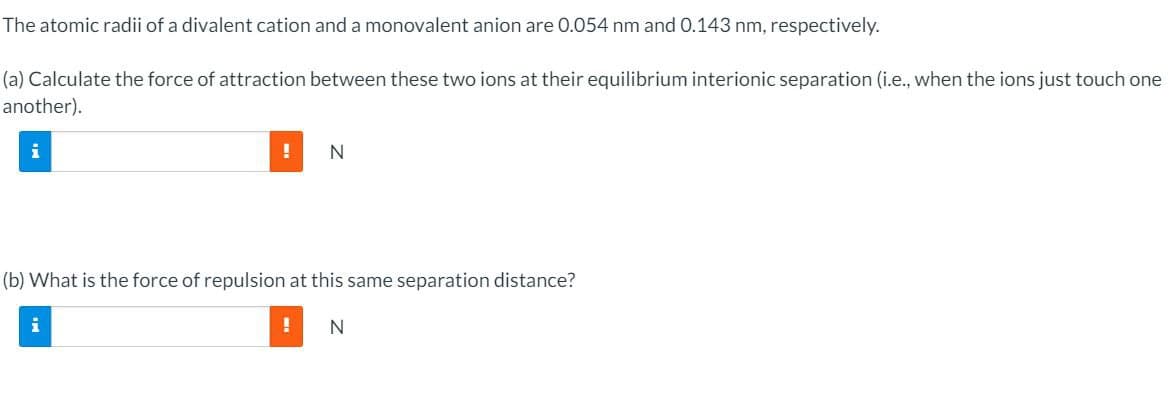The atomic radii of a divalent cation and a monovalent anion are 0.054 nm and 0.143 nm, respectively. (a) Calculate the force of attraction between these two ions at their equilibrium interionic separation (i.e., when the ions just touch one another). i (b) What is the force of repulsion at this same separation distance?
The atomic radii of a divalent cation and a monovalent anion are 0.054 nm and 0.143 nm, respectively. (a) Calculate the force of attraction between these two ions at their equilibrium interionic separation (i.e., when the ions just touch one another). i (b) What is the force of repulsion at this same separation distance?
Understanding Motor Controls
4th Edition
ISBN:9781337798686
Author:Stephen L. Herman
Publisher:Stephen L. Herman
Chapter44: Semiconductors
Section: Chapter Questions
Problem 4RQ
Related questions
Question
Solve by hand with correct answer plzz

Transcribed Image Text:The atomic radii of a divalent cation and a monovalent anion are 0.054 nm and 0.143 nm, respectively.
(a) Calculate the force of attraction between these two ions at their equilibrium interionic separation (i.e., when the ions just touch one
another).
i
(b) What is the force of repulsion at this same separation distance?
i
Expert Solution
This question has been solved!
Explore an expertly crafted, step-by-step solution for a thorough understanding of key concepts.
This is a popular solution!
Trending now
This is a popular solution!
Step by step
Solved in 3 steps with 3 images

Recommended textbooks for you

Understanding Motor Controls
Mechanical Engineering
ISBN:
9781337798686
Author:
Stephen L. Herman
Publisher:
Delmar Cengage Learning

Understanding Motor Controls
Mechanical Engineering
ISBN:
9781337798686
Author:
Stephen L. Herman
Publisher:
Delmar Cengage Learning